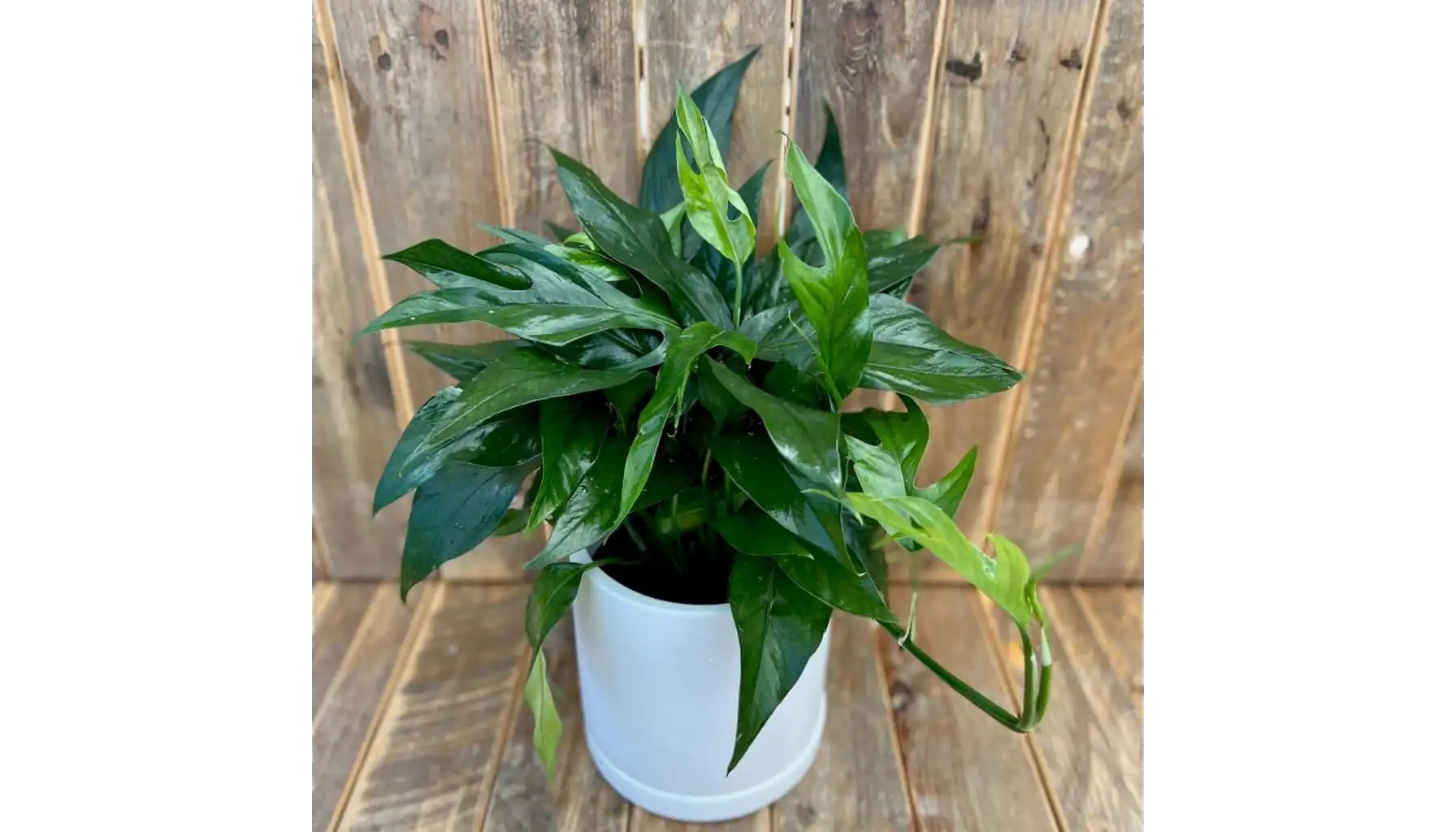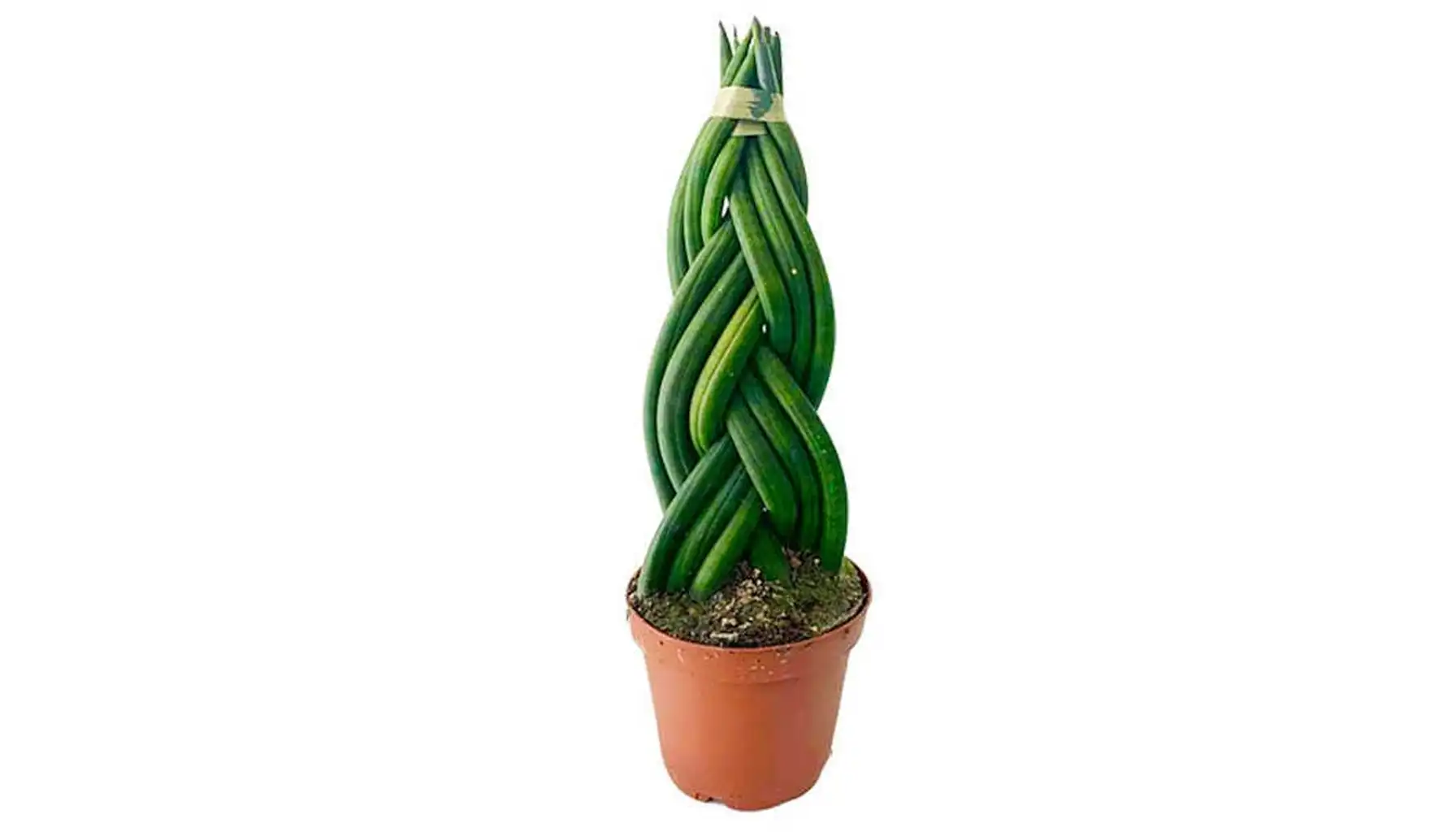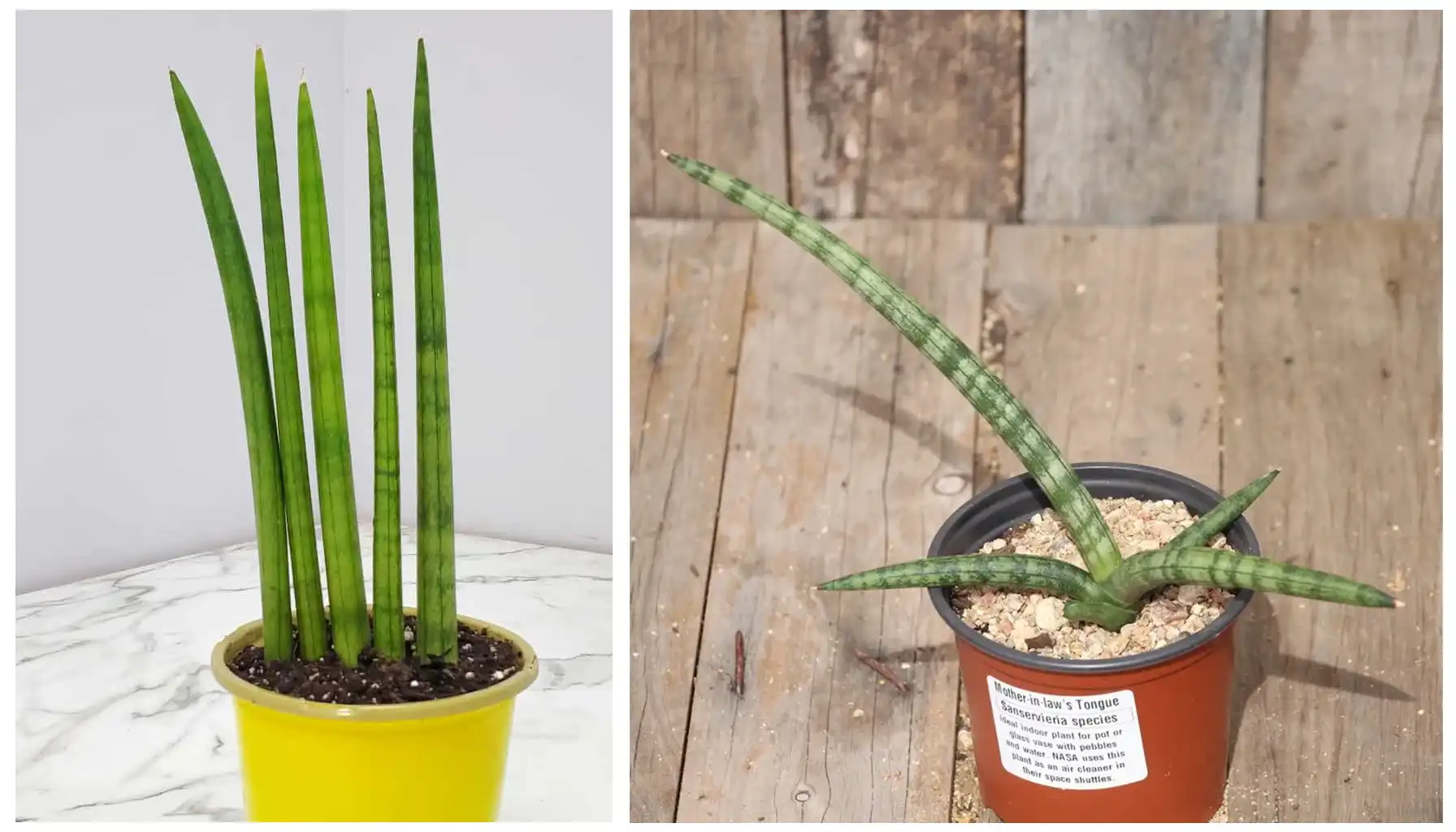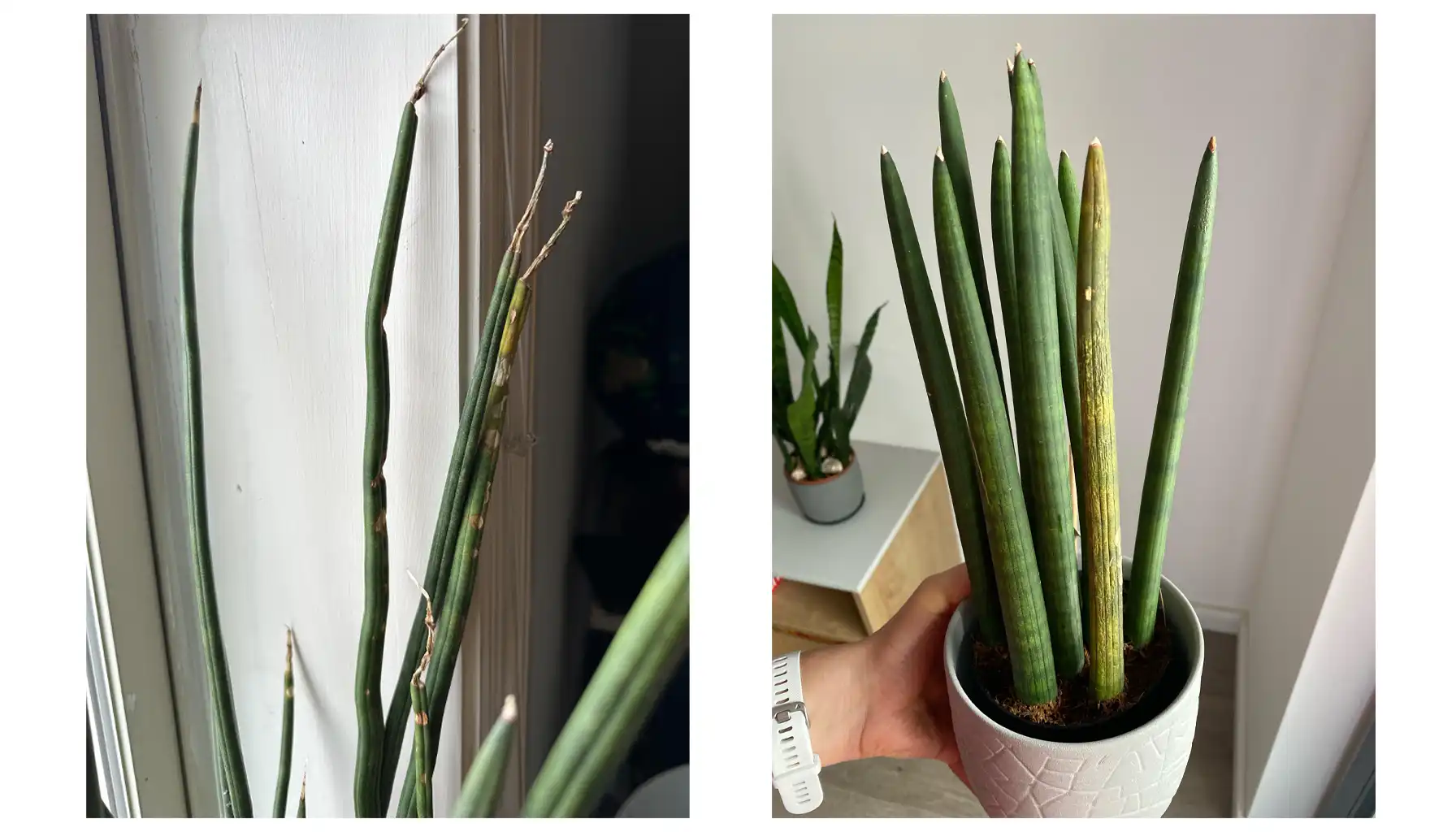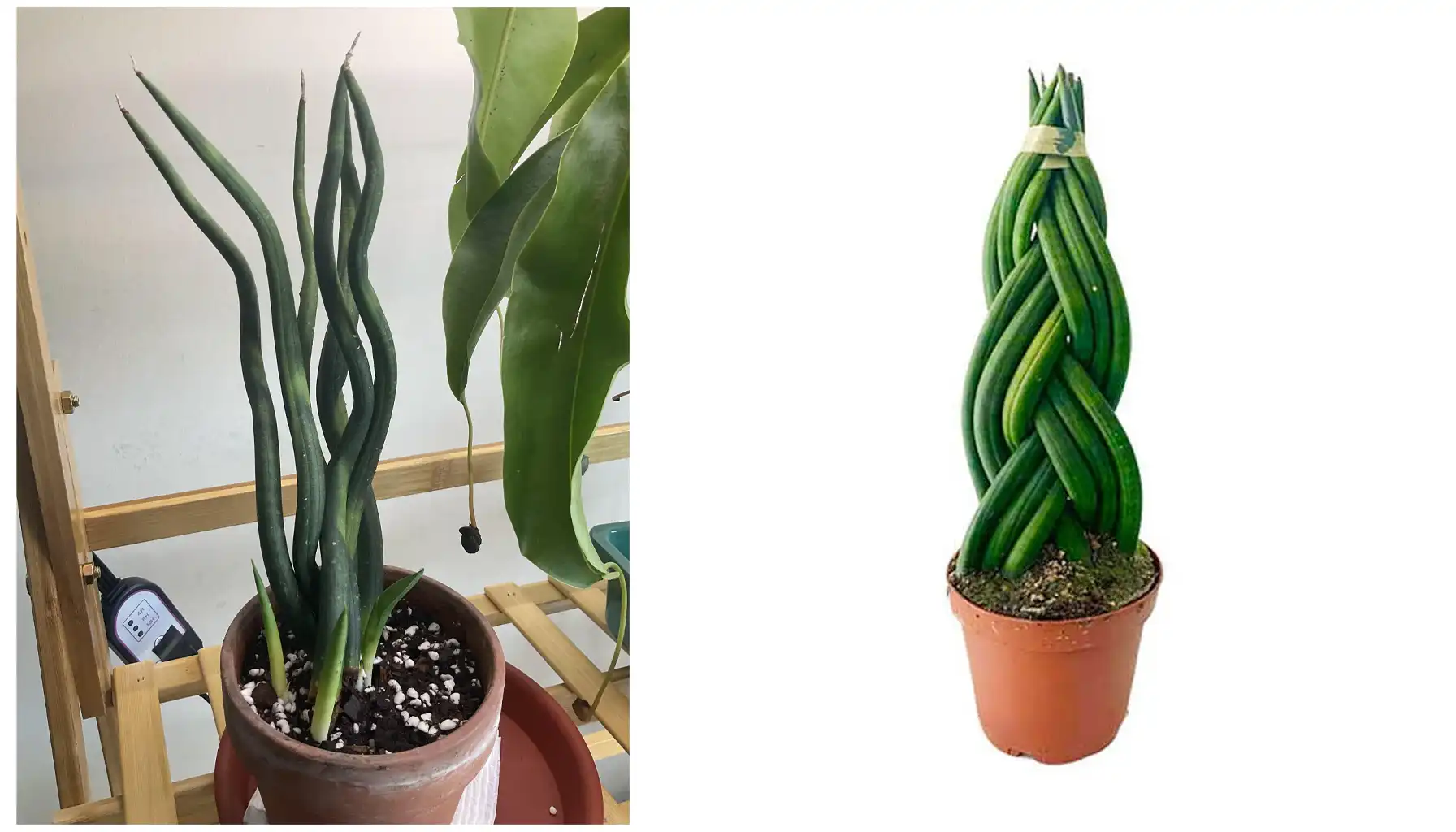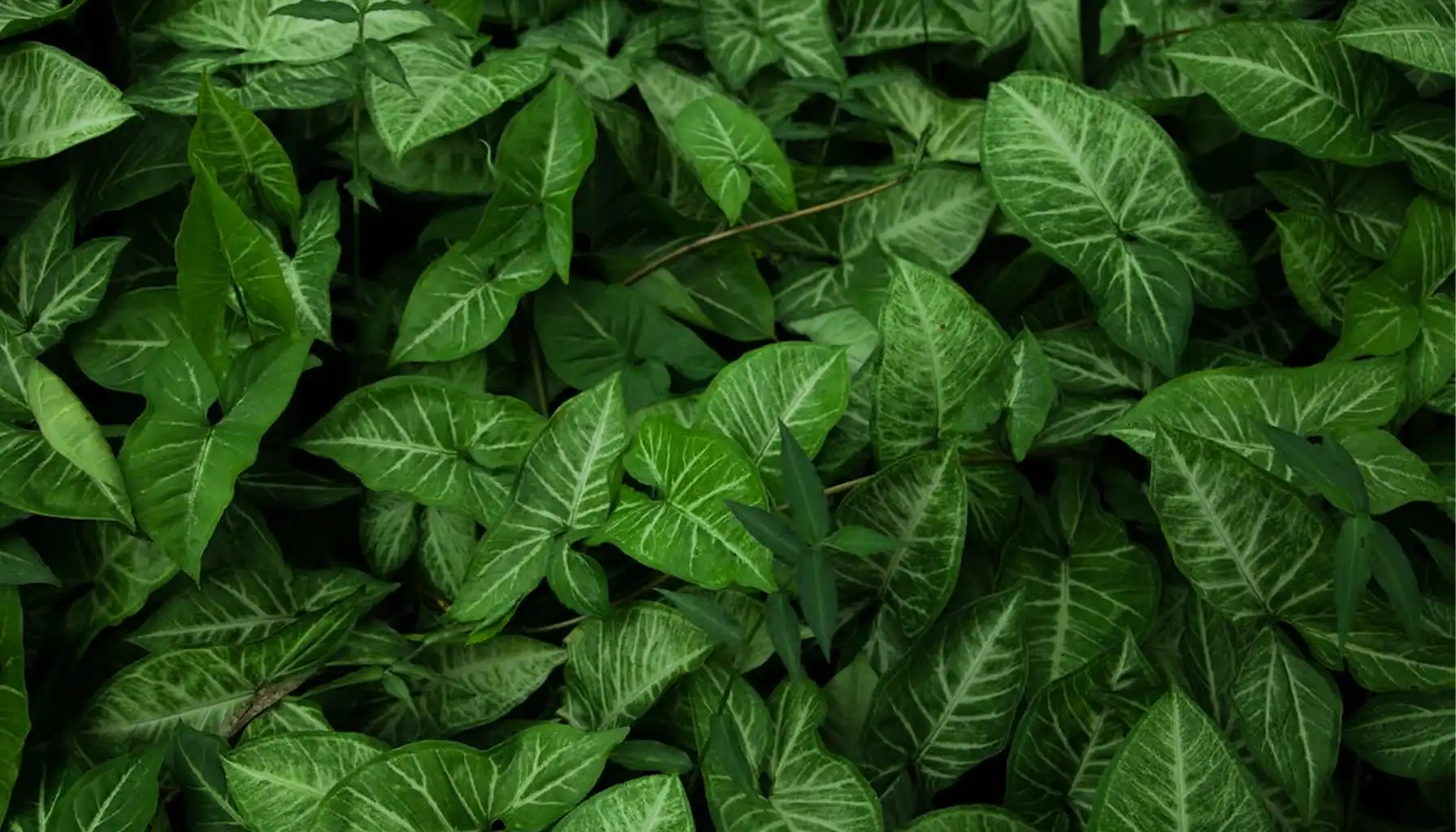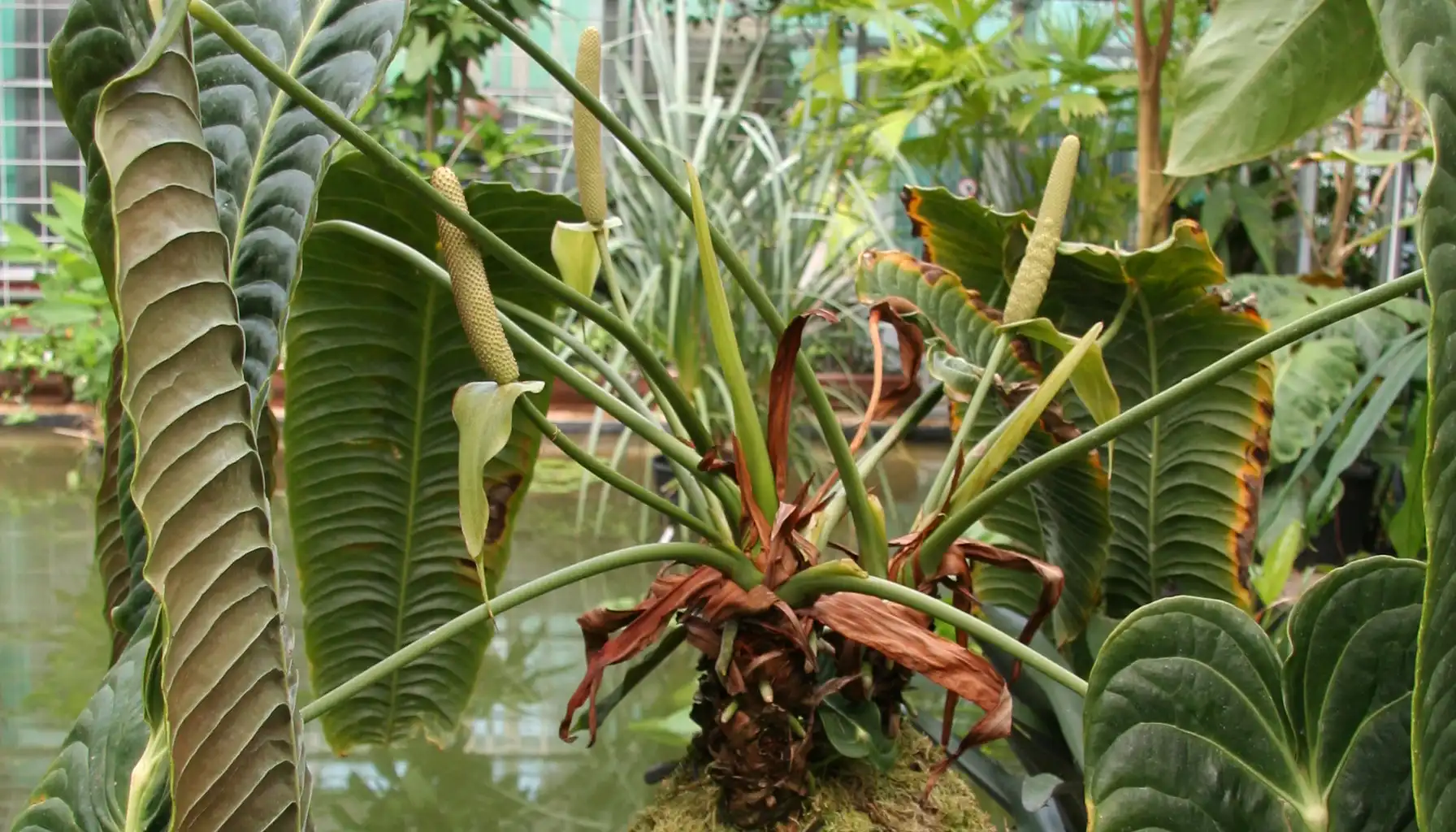It’s sharp like a spear. It’s striped and green like a snake. It’s an African Spear plant! A resilient, quirky shrub you can have at your home right now.
This article will provide you with African Spear plant care, propagation, and pruning tips. You will learn everything a gardener needs to know about this shrub.
Want to check what variety you have? Maybe it's the African Spear plant Brown type. Use a free plant identifier and find out.
About African Spear Plant
This shrub is commonly known as Sansevieria cylindrica (also called Cylindrical Snake Plant or Spear Sansevieria). In terms of family relations, this flora is related to Asparagus and Yucca, other drought-resistant plants.
The shrub consists of stout, cylindrical spears that spring from the sandy soil. A late trend is braiding these stouts. A Braided African Spear plant has ornamental value and helps safe space.
Overview |
Feature | Details |
Origin | Angola and other parts of Southern Africa |
Type | Succulent, perennial, evergreen plant |
Size | 2–3 feet (60–90 cm) tall |
Life span | Long-lived |
Leaf Colors | Dark green with lighter green or grayish horizontal stripes. |
Flowers | Small, tubular, white-green flowers (rarely grow indoors) |
Propagation | By division of rhizomes (mainly), leaf cuttings |
Toxicity | Mildly toxic (via sap) if ingested by pets or humans |
Special Features | Very drought-tolerant and hardy |
African Spear Plant Care
Coming from desert-like regions, this shrub can take a lot of damage. But it doesn't mean you can’t treat it without care at all, especially if your climate is different from its native place.
Follow these tips, and your African Spear Snake plant will grow into something stunning.
Light Requirements
This flora prefers bright, indirect light. It can take full sun, but for no more than six hours. Otherwise, it could get scorched.
If your African spear is growing outside, make sure that this spot gets shade throughout the day. Wide trees like Mulberry create great shade.
Watering Requirements
You don't need to water this flora often. Once a week or even two weeks should be enough.
Let the soil dry out completely between waterings, as overwatering can cause root rot.
Temperature Requirements
This flora thrives in temperatures between 60°F and 85°F (16°C–29°C).
The shrub is heat-resistant, but very weak to negative temperatures. You’ll have to protect the plant from freezing in winter, even if it’s indoors. Keep it away from open windows in winter and spots with cold drafts.
Soil and Fertilizer Requirements
A well-draining cactus or succulent mix is an excellent pick for this shrub. This mix has good drainage. This is essential to prevent waterlogging.
If you want to fertilize the shrub, feed it with a diluted balanced fertilizer once a month during spring and summer. No fertilizer needed in fall and winter.
African Spear Plant Problems
Most heat-resistant flora have problems with root rot. Sometimes their leaves turn yellow, and the pests surround them.
1. Overwatering / Root Rot.
Caused by: Too much water or poor drainage.
Signs: Yellowing leaves, soft or mushy base, foul smell from soil.
How to fix: Let soil dry completely between waterings; repot in well-draining soil; remove affected roots.
2. Leaf Yellowing.
Caused by: Overwatering, underwatering, or nutrient deficiency.
Signs: Leaves turn yellow, especially older ones.
How to fix: Adjust watering habits; fertilize monthly during the growing season.
3. Pests.
Common pests: Mealybugs, spider mites, scale insects, and aphids.
Signs: White cottony patches (mealybugs), tiny webs (spider mites), small brown bumps (scale), small green dots (aphids).
How to fix: Wipe leaves with alcohol, apply insecticidal soap or neem oil.
African Spear Propagation
Often, flora multiplies by seeds from its flowers. Unfortunately, the flower African Spear plant is a rare occurrence, rarely seen indoors. Instead, you’ll have to propagate it by root division, a painless propagation method used for many houseplants like Cast Iron.
Here are the short steps for right propagation.
Remove the plant from its pot. Doing it is easier when the soil is dry.
Shake off excess soil to expose rhizomes (thick underground stems). Through them, you're going to create new African Spears.
Separate the clump into sections, ensuring each has roots and at least one leaf.
Plant each section in fresh, well-draining soil. Water them lightly and place them in bright, indirect light. Once they grow a bit, you can start treating them like adult species.
Pruning Tips and Braiding
Spear plants generally require minimal pruning. They are not naturally bushy, like Schefflera. You can remove any yellowed or damaged leaves at their base using sterilized pruning shears.
Here is how you can prune these shrubs:
Put on gloves to protect your hands. The sap can cause skin irritation and is considered toxic. You will also need shears or scissors.
Inspect the plant for leaves that are yellowing, damaged, or misshapen. Use sterilized scissors or shears to cut extra leaves.
If you’re removing many parts, it’s better to remove entire spears from the base and not cut halfway up the leaf.
As you cut the stout, it’ll start secreting sap. Wipe sap from the cut ends, as it causes irritation and can be a nuisance.
Discard unhealthy cuttings.
For aesthetic purposes, you can also braid the long leaves, which also saves space. Braided African Spear plant care is easy and doesn't harm the plant. The braiding is very similar to how we do it with human hair. Make a ponytail, tangle it, and secure it with a string.
African Spear Plant Benefits
While this shrub is not Aloe Vera, which can help you heal wounds and no berry bush that can give you treats, African Spear has its benefits. Great benefits, even.
Benefit | Description |
Air Purification | Filters indoor toxins like formaldehyde, benzene, and trichloroethylene. |
Low Maintenance | Drought-tolerant and thrives with minimal watering and care. Helps save after bills and time. |
Long Lifespan | Can live for many years, providing lasting greenery. |
Decorative Appeal | Unique braided stems add architectural and aesthetic interest to interiors. Works especially well with modern indoor style. |
Stress Reduction | Indoor greenery helps reduce stress and improve mood. |
AI Plant Finder
Here’s an app that will help you become a better plant caretaker. AI Plant Finder.
This platform uses AI to identify flowers, trees, succulents, and more. You just snap or upload a photo, and the app gives you an overview. The app can safely identify 300,000+ species with ~97% accuracy.
Users can also diagnose common flora health issues (e.g., leaf spots, blight, root rot) from a photo with ~98% accuracy.
The last but not least function is Care Guidance. The platform shares personalized care tips (watering, fertilizing, light needs), and tools like a light meter and water calculator.
AI Plant Finder is available on iOS and Android.
Related AI Plant Finder Posts
